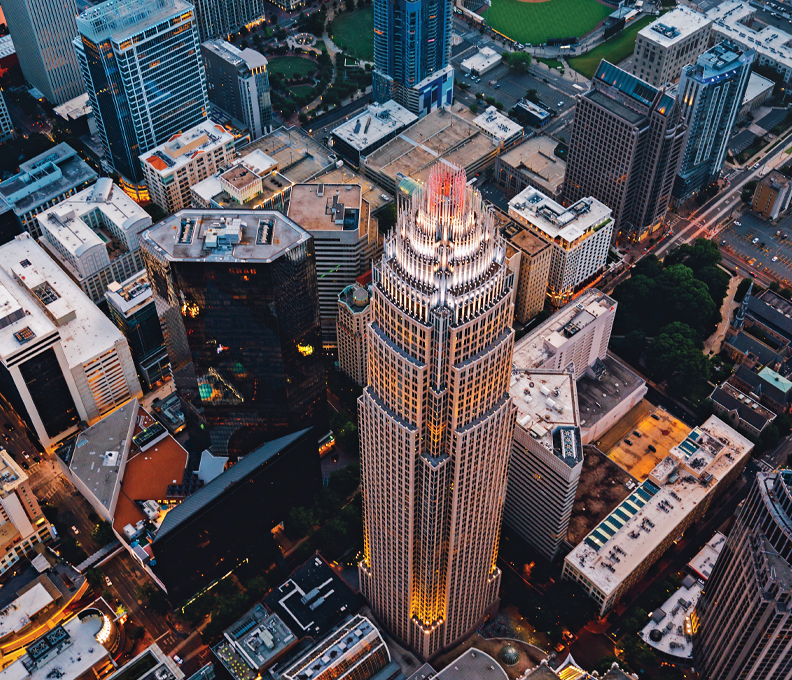The Bass Museum Celebrates 60 Years on Miami Beach
The institution is marking the anniversary with a bracing lineup of contemporary shows
January 5, 2024

Nam June Paik, Miami, 1990 / Photo: Courtesy of Photography by Brian Smith
“Eternity Now” reads the neon sign perched above the limestone facade of The Bass, Miami Beach’s city art museum. It’s a fitting, if unofficial, mantra for the 60-year-old institution, the oldest civically operated museum in South Florida—despite its classic art deco exterior, the art on the inside is strictly concerned with the now.
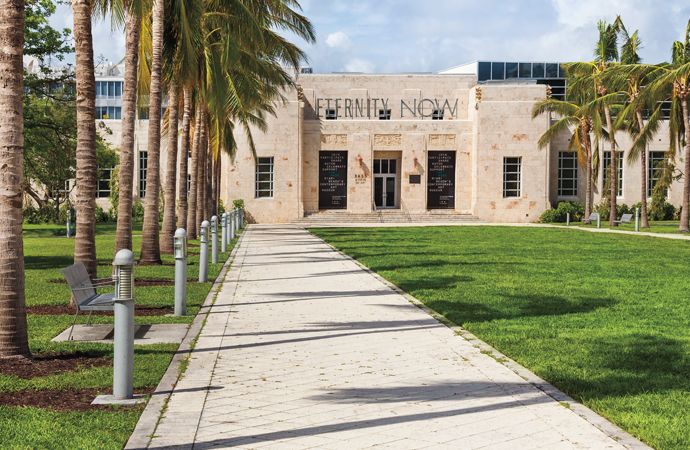
Facade of The Bass museum / Photo: Courtesy of The Bass, Miami Beach
“A lot of what we do is storytelling,” says Silvia Karman Cubiñá, the museum’s executive director and chief curator. “You curate one show, but you also curate an entire museum. It has to make sense.”
It’s the winter art season in Miami, anchored as usual by Art Basel Miami Beach, and the story is firmly about The Bass’ 60th anniversary, with an ambitious slate of contemporary art shows. Already open is “Nam June Paik: The Miami Years,” which spotlights the Korean-American artist, considered the father of video art. Paik’s time in Miami, where he lived from the 1990s until his death in 2006, is often underexamined. In December, celebrated local artist Hernan Bas, a specialist in evocative portraits, received his biggest museum show to date, opening the week of Art Basel. Shows for Lebanese-American painter and poet Etel Adnan and emerging Korean artist Anne Duk Hee Jordan are also featured.
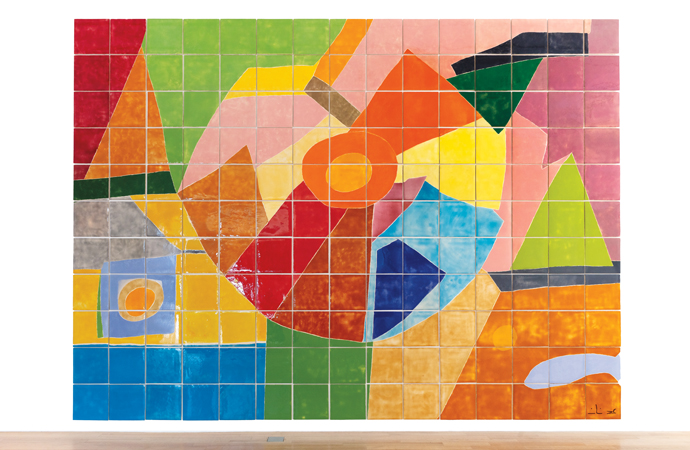
Untitled by Etel Adnan, 2023 / Photo: Courtesy of the Estate of the artist and Steir-Semler Gallery Beirut/Hamburg
It’s all a far cry from the museum’s contentious origins. In 1963, the City of Miami Beach received a donation of 500 artworks and artifacts from sugar company executive John Bass, under stipulation that they open a municipal museum in his name. The government chose a fine art deco building adjacent to Collins Park that was once the Miami Beach Public Library to convert into the new museum. It was the first civic institution of its kind in South Florida, but some were less than enthused.
“I always felt uncomfortable at The Bass museum in its first iteration,” recalls Arnold Lehman, director emeritus at the Brooklyn Museum. Lehman spent much of his youth visiting the Miami Beach Public Library, and he remembers being disappointed and upset by both the loss of the library and what had replaced it. “It was great to have a museum on Miami Beach, but I found it to be a very uncomfortable, unwelcoming place.”
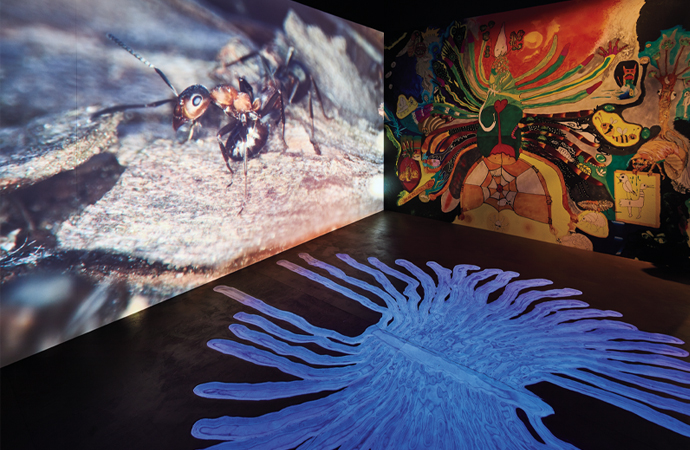
Anne Duk Hee Jordan’s Brakfesten—La Grande Bouffe, 2023 / Photography by Elmar Witt, courtesy of the artist
Scandal also plagued the museum, which Bass ran himself with “absolute control,” according to a New York Times report. The collection, which claimed to hold works by old masters such as Rembrandt and El Greco, had faced accusations from the Art Dealers Association in 1969 of “flagrant and pervasive mislabeling.” Two years after Bass died in 1978, the city hired art historian Diane Camber to modernize the museum. The art landscape in South Florida was still young in those days, and museums struggled to fundraise from a largely transient population. Still, Camber managed to transform The Bass into a legitimate art museum. She grew the collection to 3,000 works and held important exhibitions such as “Precious Legacy,” a show of European Judaica recovered from Nazi looting. “I stand on her shoulders,” Cubiñá says. Then, in 2001, a redesign by architect Arata Isozaki transformed and expanded the museum with an additional 16,000 feet of exhibition space.
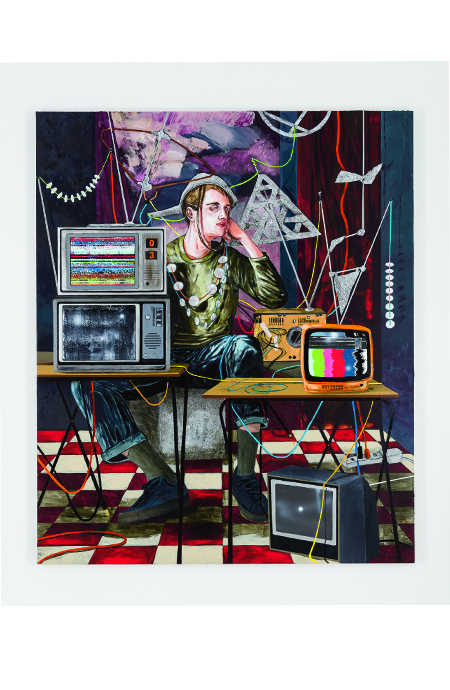
Hernan Bas’ Conceptual Artist #20, 2023 / Photo: Courtesy of the artist and Lehmann Maupin, New York, Honk Kong, Seoul and London
Cubiñá took over after Camber retired in 2007, and under her tenure the museum has become a crucial link in the global contemporary art scene. Major shows for El Anatsui and Ugo Rondinone have been held in the past decade, and the museum has become a proving ground for locals such as Cara Despain. A second renovation in 2017 expanded exhibition space by 50 percent, and an upcoming third one plans to add an entire new wing.
That The Bass’ next expansion was approved by Miami Beach residents as part of a municipal bond package speaks to the museum’s ability to cater to its community. Shows of interactive art by Naama Tsabar and an augmented reality collaboration with Snapchat have proven popular, and programs such as Bass Babies and its Future Bass young collectors’ group are paving the way for the next generation. Lehman, who scorned the original museum, is proud to see how far things have come. “It’s wonderful to see that The Bass has inclinations and is trying to be an important place for the community, one that’s exciting, life-affirming and appealing to all ages.”
